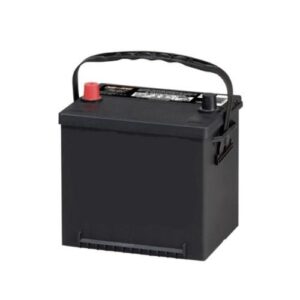Wondering what reserve capacity on a battery is? Well, let me break it down for you. Reserve capacity refers to the amount of time a fully charged battery can sustain a minimal load, usually around 25 amps, before dropping below the minimum voltage considered usable. In simpler terms, it’s the battery’s ability to keep essential systems running in case of a power outage or when the engine is off. Reserve capacity is crucial for reliable performance, especially in vehicles and other applications where a consistent power supply is essential. Now, let’s delve deeper into why reserve capacity matters and how it can impact your battery’s performance. Stay tuned!
What is Reserve Capacity on Battery?
When it comes to batteries, there are several important metrics to consider in order to understand their performance and capabilities. One such metric is reserve capacity. Reserve capacity refers to the amount of time a fully charged battery can deliver a specific amount of current before its voltage drops below a minimum threshold. In simpler terms, it is a measure of how long a battery can power a given load when the charging system fails or is unable to provide power.
Understanding reserve capacity is crucial in various applications, from automotive to recreational vehicles, as it ensures a reliable source of power in emergency situations or when the primary charging system is unavailable. In this article, we will delve into the concept of reserve capacity, its significance, how it is calculated, and other related factors that can influence battery performance.
The Significance of Reserve Capacity
Reserve capacity plays a vital role in maintaining electrical power in situations where the primary charging system fails or cannot provide sufficient power. It acts as a safety net, ensuring that even if the alternator in your car or the external power source in your recreational vehicle malfunctions, you still have enough power to operate essential electrical systems, such as lights, radios, and alarm systems.
Furthermore, reserve capacity is especially crucial in critical applications where power interruptions can have severe consequences, such as hospitals, data centers, and emergency response systems. These systems rely on batteries with high reserve capacity to bridge the gap until alternate power sources can be activated or the primary power source is restored.
Calculating Reserve Capacity
Reserve capacity is typically measured in minutes and is determined by subjecting a fully charged battery to a constant electrical load until its voltage drops to a specific threshold. The most common threshold used is 10.5 volts for automotive batteries, which corresponds to a fully discharged state.
To calculate the reserve capacity, the battery is discharged at a constant current draw. The current used for the test is typically determined by dividing the amp-hour rating of the battery by two. This number represents a moderate load that simulates typical electrical demands.
For example, if you have a battery with an amp-hour rating of 100 Ah, the reserve capacity would be calculated by dividing 100 by 2, resulting in a current draw of 50 amps. The battery is then discharged at this rate until its voltage reaches 10.5 volts, and the time taken to reach this point is the reserve capacity.
Factors Affecting Reserve Capacity
Several factors can influence the reserve capacity of a battery. Understanding these factors can help you optimize the performance and longevity of your battery. Here are some key factors to consider:
Battery Type and Quality
Different battery chemistries and qualities can have varying reserve capacities. Lead-acid batteries, for example, are commonly used in automotive applications and typically have reserve capacities ranging from 60 to 160 minutes. On the other hand, lithium-ion batteries, which are becoming increasingly popular due to their high energy density, can have reserve capacities exceeding 200 minutes.
It is essential to choose a battery type and quality that aligns with your specific power requirements and application.
Temperature
Temperature has a significant impact on battery performance, including reserve capacity. In general, batteries perform best within a specific temperature range, often referred to as the recommended operating temperature. When the temperature exceeds or falls below this range, the battery’s capacity and performance can suffer.
Extreme heat can accelerate chemical reactions within the battery, leading to faster self-discharge and reduced overall capacity. Similarly, extreme cold can impede chemical reactions and make it harder for the battery to supply power. It is important to consider the temperature conditions in which the battery will operate and choose a battery that can withstand those conditions while maintaining optimal performance.
Age and Usage Patterns
As batteries age and undergo charge-discharge cycles, their overall capacity may diminish. Regular usage and cycling can lead to gradual degradation, reducing the reserve capacity over time. It is important to monitor the battery’s condition and replace it when necessary to ensure reliable performance.
Moreover, the usage patterns can also impact the reserve capacity. Batteries subjected to frequent deep discharges or high discharge rates may experience a reduction in their reserve capacity compared to batteries used under normal operating conditions. Understanding the recommended usage patterns and limitations of your battery can help prolong its lifespan and maintain optimal performance.
Manufacturing Variations
Manufacturing variations can also affect the reserve capacity of batteries. Even within the same battery model and brand, slight differences in manufacturing processes can lead to variations in performance. It is important to consider these variations and choose reputable battery manufacturers known for their consistent quality and performance.
Reserve capacity is a critical metric that determines how long a battery can power a load when the primary charging system fails or is unable to provide power. Understanding the significance of reserve capacity, how it is calculated, and the factors that can affect it is essential for choosing the right battery for your specific application.
By considering factors such as battery type and quality, temperature, age and usage patterns, and manufacturing variations, you can make informed decisions and optimize the performance and longevity of your battery. Whether you rely on batteries for automotive purposes, recreational vehicles, or critical systems, having a solid understanding of reserve capacity will ensure a reliable power source when you need it most.
Frequently Asked Questions
What is reserve capacity on a battery?
Reserve capacity is a measure of the battery’s ability to sustain a minimum electrical load in case the vehicle’s alternator fails. It indicates the number of minutes a battery can deliver a steady 25-ampere current at 80°F (26.7°C) without dropping below 10.5 volts.
How is reserve capacity determined?
Reserve capacity is determined by subjecting the battery to a standardized test, where it discharges a constant electrical load until its voltage drops below a specified level. The time taken to reach that point is the reserve capacity of the battery.
What is the significance of reserve capacity?
Reserve capacity is crucial for vehicles, as it provides a buffer of power in case the alternator fails or cannot meet the electrical demands of the vehicle. It ensures that vital functions such as lights, radio, and engine ignition can still be maintained for a certain duration.
Why is reserve capacity different for various batteries?
The reserve capacity of a battery depends on several factors, including its size, design, and construction. Batteries with larger overall capacity tend to have higher reserve capacity values since they can store more energy and sustain a load for a longer duration.
How does reserve capacity relate to cold cranking amps (CCA)?
Reserve capacity and cold cranking amps (CCA) are both indicators of a battery’s performance, but they measure different aspects. Reserve capacity focuses on the ability to sustain a minimum electrical load, while CCA measures the ability to start an engine under cold weather conditions.
Does reserve capacity affect the lifespan of a battery?
Reserve capacity itself does not directly impact the lifespan of a battery. However, a higher reserve capacity generally indicates a more robust and durable battery that can handle demanding situations. Other factors, such as maintenance, usage patterns, and environmental conditions, determine the overall lifespan of a battery.
Final Thoughts
The reserve capacity on a battery refers to the amount of time a fully charged battery can provide a safe and reliable power supply when the charging system fails. It acts as a backup power source, ensuring uninterrupted operation during unexpected power outages or emergencies. Reserve capacity is crucial for various applications, from vehicles to backup power systems. It allows users to continue using their equipment or vehicles until they can find an alternative power source. Understanding reserve capacity is essential for ensuring reliable power supply and minimizing disruptions in various industries. Properly assessing and choosing batteries with adequate reserve capacity can help avoid downtime and potential losses.



